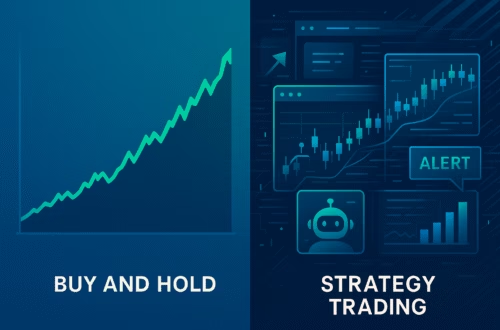Intro 🌟
Welcome to the second part of our comprehensive series on trading for beginners. In this segment, we will build on the foundational knowledge you acquired in part one. The aim is to guide you towards becoming a consistently profitable trader without risking your hard-earned money. With the right strategies, tools, and mindset, you can achieve financial freedom and grow your wealth effectively. Let’s dive into the essentials of trading and the powerful tools available to you, including insights into pickmytrade.
Learning the strategy 🎯
In this section, we will develop a straightforward trading strategy that can be applied across various markets. It’s essential to understand that no one becomes consistently profitable by merely adopting someone else’s strategy. Instead, tailor the strategy to fit your personality, trading style, and time frame. Let’s explore a simple trend-following strategy that can yield impressive results.
Theory 📖
The core concept of our strategy revolves around identifying market phases and utilizing exponential moving averages (EMAs). Understanding market cycles is crucial; they typically move in phases of consolidation and trends. Our focus will be on identifying pullbacks in a trending market, which is where we will execute our trades. We will use a combination of EMAs—specifically the 8, 20, and 50 periods—to predict market direction effectively.
Practical 🛠️
Now, let’s put theory into practice. Start by identifying the market phase using your EMAs. In a bullish trend, we look for pullbacks to enter trades. Conversely, in a bearish trend, we look for opportunities to sell during pullbacks. The strategy will focus on the daily time frame, allowing you to spend minimal time while maximizing your returns.
Powerful Tools 🛠️
Utilizing the right tools is essential for effective trading. Trading platforms like TradingView offer robust features for analysis and execution. Set up your EMAs, and familiarize yourself with the platform’s capabilities, including alerts and drawing tools. These tools will enhance your trading experience and decision-making process.
Connecting your broker to TradingView 🔗
To maximize efficiency, connect your broker to TradingView. This integration allows you to trade directly from the platform while utilizing its analytical tools. Follow the steps to log in to your broker account through TradingView, ensuring a seamless trading experience.
Finding a live trade setup 🔍
Once your broker is connected, it’s time to search for live trade setups. Use the strategy we’ve discussed to identify potential entry points based on price action and EMA alignment. Remember to assess the market context and ensure your setups meet the criteria for high-probability trades.
A setup live at market right now 📈
In real-time trading, it’s crucial to be ready to act on valid setups as they appear. Keep an eye on the charts, and when you identify a valid entry signal that meets your strategy criteria, execute your trade promptly. The ability to act quickly is key to seizing profitable opportunities in the market.
Bar replay mode ⏳
Utilize the bar replay mode in TradingView to practice your strategy in a simulated environment. This feature allows you to replay market movements and test your strategy without financial risk. It’s a valuable tool for honing your skills and refining your approach before applying it in live trading.
Getting down to business 💼
With the foundational knowledge and practical tools in place, it’s time to get serious about your trading. Develop a solid trading plan that outlines your strategy, risk management, and goals. Stick to your plan and continuously refine it based on your experiences and market conditions.
Testing & Journaling 📝
Testing and journaling your trades is essential for continuous improvement. Keep a detailed record of your trades, including entry and exit points, reasons for taking the trade, and outcomes. This practice will help you identify patterns in your trading behavior and refine your strategy over time.
Live Journaling Examples 📊
To illustrate the importance of journaling, review live examples of trade journals. These examples highlight the key components of effective journaling, including emotional state, decision-making process, and lessons learned. Use these insights to enhance your trading discipline and accountability.
Make more money journaling 💰
Effective journaling can lead to increased profitability. By analyzing your trade history, you can identify what works and what doesn’t, allowing you to make informed adjustments to your strategy. Embrace journaling as a fundamental aspect of your trading journey.
Why Fees Matter 💵
Understanding trading fees is crucial for maintaining profitability. Fees can significantly impact your overall returns, so it’s essential to choose a broker with transparent and reasonable fee structures. Familiarize yourself with the types of fees associated with trading and factor them into your overall strategy.
Scaling your trading efficiently 📈
As you grow more confident in your trading, consider scaling your operations. This involves increasing your position size gradually while ensuring you maintain sound risk management practices. Scaling efficiently can lead to compounding returns over time, enhancing your overall trading success.
Your next steps to become successful 🚀
To become a successful trader, commit to continuous learning and improvement. Engage with trading communities, seek mentorship, and stay updated on market trends. Your journey will require dedication and discipline, but the rewards can be substantial when executed effectively.
Work with us🤝
PickMyTrade specializes in automating trading bots, enabling seamless strategy execution for futures from platforms like TradingView, across well-known brokers such as Tradovate.



